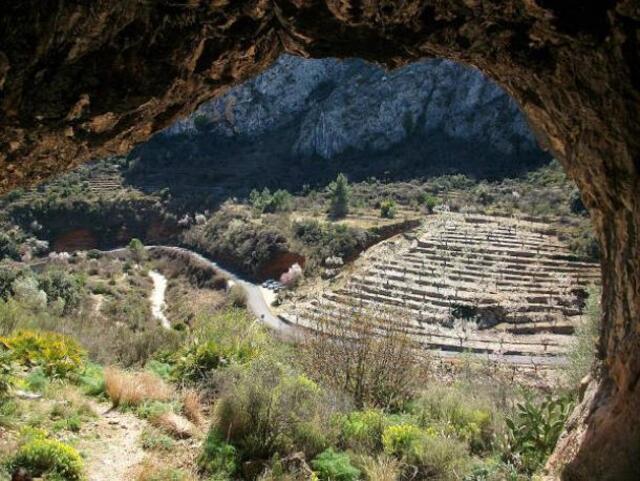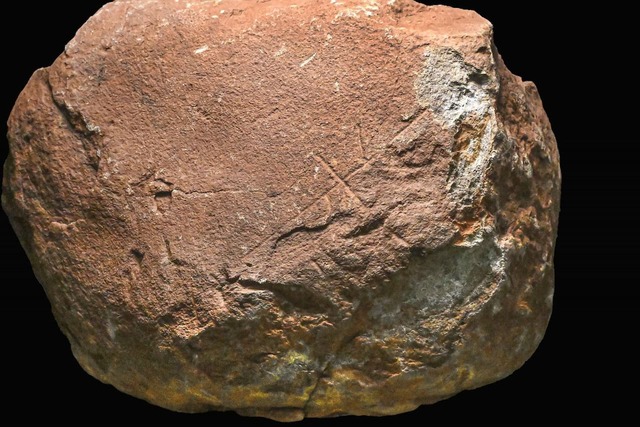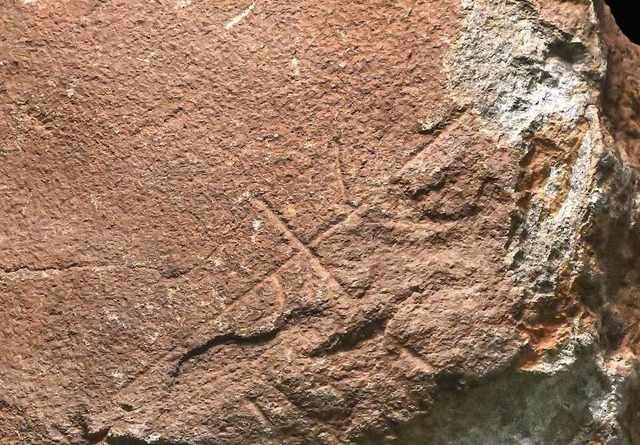Marbella, a city in southern Spain known for its beautiful coastline and luxurious lifestyle, has recently become the center of an archaeological breakthrough that could change the way we view prehistoric art in Europe. A discovery at the Coto Correa site in the Las Chapas neighborhood has unveiled prehistoric engravings on a stone block, believed to be over 200,000 years old. If confirmed, this finding will rewrite the history of human symbolic expression, pushing back the timeline of rock art by at least 100,000 years. This revelation not only challenges our understanding of early human culture but also highlights Marbella as a crucial site in the study of Paleolithic human life.
The Coto Correa Site and its Archaeological Importance
The Coto Correa site, located just outside Marbella, has long been a hotspot for archaeological exploration. This area has provided significant insights into the early inhabitants of the Iberian Peninsula, especially the Lower Paleolithic era. The discovery of lithic tools in the 1950s already suggested the site’s importance, and subsequent excavations have continued to uncover valuable archaeological remains.
In 2024, a team of archaeologists led by Luigi Maria Caliò from the University of Catania focused their efforts on digging deeper into this site, expecting to find more evidence of human settlement or even warehouses. What they found instead was unexpected—a gabbro stone block featuring intricate engravings, the oldest known in Europe, possibly predating the oldest cave art by over a century. This discovery was not only unexpected but profound, as it suggests that human symbolic thinking was more advanced than previously thought during the Early Middle Paleolithic.

Video
Watch the video about the newly discovered 200,000-year-old rock carvings in Marbella, potentially among Europe’s oldest cave art.
The Prehistoric Engravings: An Early Form of Symbolic Expression
The engravings on the stone block found at Coto Correa are linear and geometric in nature, strikingly different from the animal depictions or human figures found in later cave art. These patterns appear to be deliberate markings, made with intention rather than natural wear or tool use. The fact that they are geometric and not representational—such as images of animals or humans—raises important questions about their function.

Could these engravings have been an early form of record-keeping? Perhaps they were used to track time, count objects, or mark significant events. Alternatively, the markings might have had a symbolic or ritualistic significance, pointing to a nascent form of communication or belief system. What is clear, however, is that these engravings represent an important milestone in the evolution of human cognitive abilities, suggesting that early humans were capable of abstract thinking and symbolic expression long before the art we traditionally associate with prehistoric cultures.

This discovery is monumental in part because of its sheer age. The markings are estimated to be over 200,000 years old, placing them deep in the Lower Paleolithic period, well before the cave art found in the caves of France and Spain. This pushes back the timeline of human symbolic expression, which has traditionally been thought to begin in the Upper Paleolithic, around 50,000 years ago.
Technological Advancements in the Study and Preservation of the Engravings
To verify the age and authenticity of the engravings, the research team is employing cutting-edge technology. Advanced absolute dating techniques, such as quartz studies from sediment samples, are being used to determine the exact age of the stone and the context in which it was found. In addition, 3D scanning technology is being used to create a digital representation of the stone, allowing researchers to examine the engravings in fine detail without damaging the artifact.
The high-resolution 3D scans will help distinguish between natural formations in the rock and intentional carvings, providing valuable data that will support or challenge the current interpretation. This digital documentation will also make the findings accessible to scholars around the world, ensuring that this discovery can be studied and appreciated by future generations of researchers.
Implications for the History of Art and Human Cognitive Development

If the engravings on the stone block are confirmed to be over 200,000 years old, this discovery could force a major rethinking of early human cognitive development. The ability to create abstract, symbolic marks suggests a level of cognitive sophistication that was previously thought to have developed much later in human history.
This finding also raises important questions about the spread of human culture and symbolic practices. If early humans in what is now southern Spain were engaging in symbolic behavior, it suggests that the cognitive abilities required for such practices were widespread across early human populations. It also hints at the possibility of more complex social structures, where early humans may have used art not only for communication but also for religious or cultural purposes.
The implications of this discovery extend beyond just the field of archaeology. It forces us to reconsider the nature of human evolution and how early humans interacted with their environment, with one another, and with their developing cultural practices. What was once thought to be the domain of the Upper Paleolithic period may have actually begun much earlier, and this discovery opens the door to further exploration of prehistoric art and symbolic thinking.
Marbella’s Role in Paleolithic Studies and European Prehistory
Marbella’s Coto Correa site is now poised to play a key role in the study of prehistoric human life, particularly in understanding the cognitive and cultural evolution of early humans in Europe. If the dating of these engravings is confirmed, Marbella will join other important archaeological sites like Altamira and Lascaux, known for their cave art, in rewriting the story of early European civilization.
This discovery is not just a significant archaeological find but also a testament to the rich history of the Iberian Peninsula. While much of Spain’s prehistoric art is centered in northern regions, the findings at Marbella help to complete the picture of early human life on the southern coast of the peninsula. Marbella’s unique position as a crossroads between Africa and Europe makes it an ideal location for understanding the movements and interactions of early human populations.
Ongoing Research and Preservation Efforts
As the study of the engravings continues, the Marbella City Council has pledged 8,000 euros to fund further research and preservation efforts. These funds will help ensure that the site is properly excavated, documented, and preserved for future study. The findings will also be shared with the public through exhibitions, conferences, and specialized publications, helping to further the understanding of the significance of this discovery.
Additionally, there are plans to make the site accessible to tourists and the general public once further research has been completed. This will allow visitors to see firsthand the incredible history that lies beneath Marbella’s surface, providing an opportunity to connect with the region’s rich cultural heritage.
Video
Watch the video What Can Cave Paintings Tell Us About Our Ancestors? from Ancient Earth on BBC Earth Science.
Conclusion: A New Chapter in the Study of Prehistoric Art
The discovery of the prehistoric engravings at Coto Correa marks a new chapter in the study of prehistoric art and human development. If these engravings are confirmed to be as old as researchers believe, they will challenge our understanding of when and where early humans first began to create symbolic representations.
This find not only underscores the cognitive abilities of early human populations but also highlights Marbella’s place in the broader context of European prehistory. As research continues, we can expect more revelations that will reshape the way we think about early human culture, art, and the development of complex societies. This discovery serves as a reminder that the story of human civilization is still being written, and there is much more to uncover.



